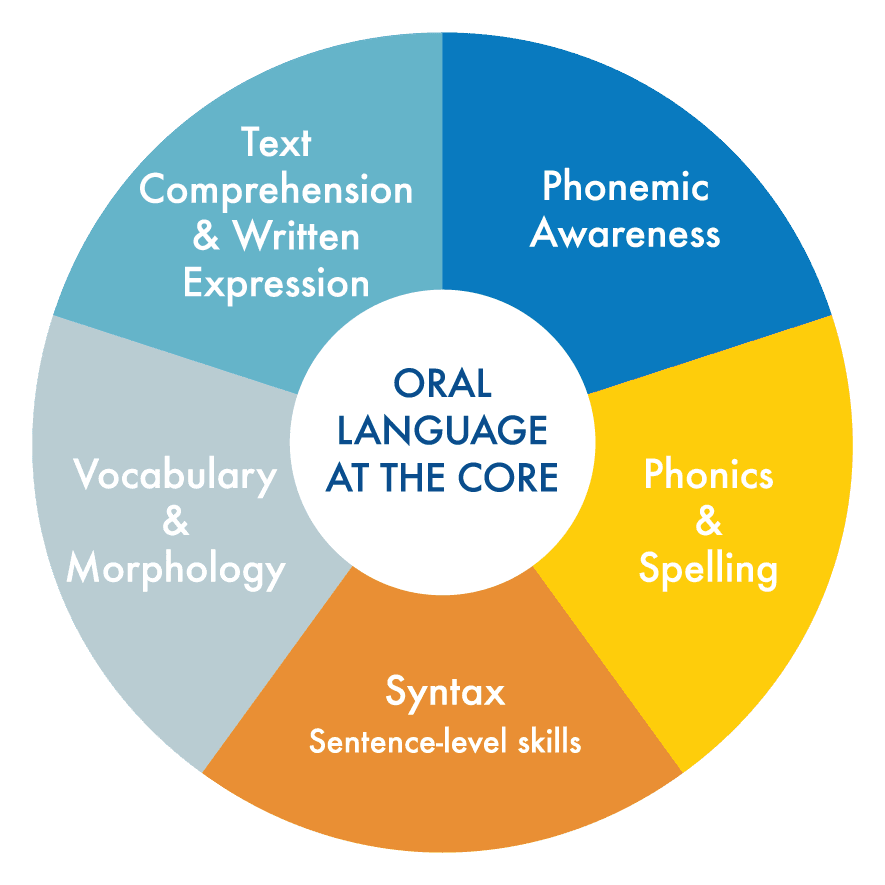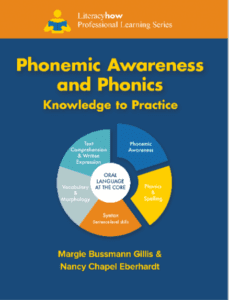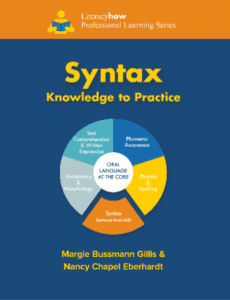
morphology
What is it?
Morphology is the study of meaningful units of language, called morphemes, and how they are combined in forming words. For example, the word contradiction can be broken up as contra-dict-ion, with the prefix contra- (against), the root word dict (to speak), and the suffix –ion (a verbal action).

morphology
What is it?
Morphology is the study of meaningful units of language, called morphemes, and how they are combined in forming words. For example, the word contradiction can be broken up as contra-dict-ion, with the prefix contra- (against), the root word dict (to speak), and the suffix –ion (a verbal action).
Frequently Asked Questions
Why are morphological skills important to literacy?
Learning about the meaningful relationships between words, including how they sound, how they’re spelled, and what their morphological structure is, contributes to vocabulary knowledge as well as reading comprehension.
Strong correlations have been found between morphological awareness and success in reading, writing and spelling.
When is it appropriate to begin instruction to develop students’ morphological awareness?
Students understand and use basic morphological knowledge as early as kindergarten and first grade. Begin by teaching the plural marker s (pronounced /s/ and /z/) and past tense –ed (pronounced /id/, /d/, /t/) as students sort pictures. When students understand these endings, called inflectional morphemes, move on to compound words (cowboy, moonlight).
Do root word and base word mean the same thing?
Root and base word are two different concepts. Base word refers to a word stripped of its affixes. For example, spell is the base word in spelling and misspell; whereas, a root refers to a word part from an original language, such as Latin or Greek. For example, cred is the root in incredible and credit. Unlike a base word, a root cannot stand alone but is used to form a family of words with related meanings.
What is the difference between word division by syllable vs. by morpheme?
Syllables are units of sound organized around a vowel, and they do not necessarily convey meaning. In contrast, morphemes are units of meaning that can be found across multiple English words. The same word may be divided differently depending on whether it is broken down by syllable (sound) or morpheme (meaning). For example, the word contradiction may be divided by syllable (con-tra-dic-tion) or by morpheme (contra-dict-ion). Proficient readers analyze words at the morpheme level because it enables them to directly get at the meaning of words.
Teacher tip: Morphological classification
Begin morphology instruction in Kindergarten by having students sort pictures into 2 different columns: singular/one (dog, cat, bird) and plural/more than one (dogs, cats, birds). After sorting all of the pictures, have students name all of the objects in each category. Emphasize the sound at the end of the word for objects in the “more than one” group (i.e., / s / or / z /).
Teacher tip: contextualize
Morphology should be taught within the context of vocabulary instruction as a strategy for understanding the relationships among words based on their shared meaningful units – i.e., their bases/roots, prefixes, and suffixes.
Teacher tip: Teach affixes & roots
Teach prefixes, suffixes, and roots that appear most frequently in English and have the greatest utility for language arts and content area materials. For example, the 20 most common prefixes make up 97% of all prefixed words. The most frequently used roots are highlighted in these roots trees.
Teacher tip: Use Word Webs
Use word webs to teach a root or baseword and its derivative forms. This activity helps students see the interconnections among words and facilitates word storage and word retrieval.
Tips for Principals: Read more, do more
Select one of the recommended articles and have teachers discuss it at a grade-level meeting. Ask teachers to provide one example of how they plan to teach morphology more explicitly and a time of day when you might observe this practice.
Tips for Principals:PD
Provide professional development for your teachers to increase their awareness of morphology, as well as its important role in vocabulary development and improving students’ reading and spelling skills.
Read More
- Ebbers, S. (2008). Linking the language: A cross-disciplinary vocabulary approach. Retrieved from http://www.readingrockets.org.
- Hennessy, N. & Apel, K. (Spring 2017). Morphological awareness. How the pieces add up. Perspectives on Language and Literacy.
- Kieffer, M. & Lesaux, N. (2007). Breaking down words to build meaning: Morphology, vocabulary, and reading comprehension in the urban classroom. The Reading Teacher, 61(2), 134-144.
Literacy How Professional Learning Series
The Literacy How Professional Learning Series translates the latest reading research into how-to instruction. The Knowledge to Practice book Series—Phonemic Awareness and Phonics, Syntax, Vocabulary, and Comprehension—is based on the current and comprehensive Literacy How reading model. It draws upon the authors’ decades of expertise and experience working with thousands of general and special education teachers. The Series emphasizes Pre-K-3rd grade conceptual and skill development. Teachers of older emerging or struggling readers will also find these tools useful.

Phonemic Awareness and Phonics—the keys to breaking the code!

Syntax is essential—even for beginning readers!

Vocabulary knowledge is essential for effective comprehension!

Comprehension is the goal of reading—even for beginning readers!